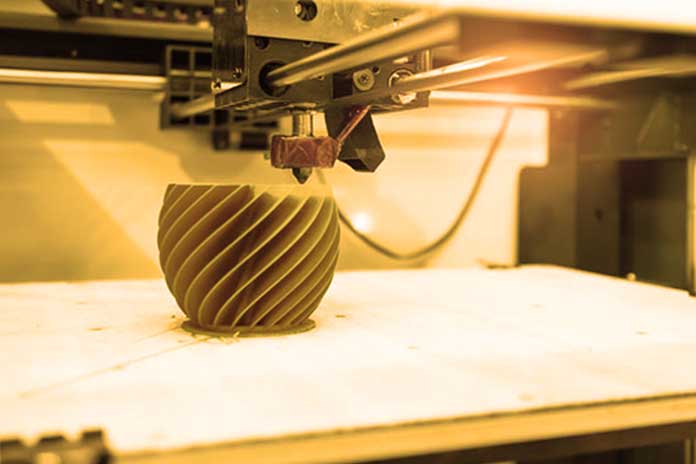Many people think of an FDM 3D printer and low-quality plastic models when they hear “3D printing”. But this technology has developed rapidly in a short time. Nowadays, entire factories offer additive manufacturing at the highest level and quality, capable of mass-producing. But how does industrial 3D printing differ from FDM printing, and what are the advantages? The answer to this can be found in the following article.
Early FDM Printers
Fused Deposition Modeling (FDM) was developed in the 1980s and started a new revolution in rapid prototyping. The process was initially relatively expensive, but it was quick. Nowadays, anyone can get a small 3D printer and, for example, print simple spare parts themselves.
FDM 3D printers use thin plastic filament threads. These are pushed into a nozzle where they are heated and thus become flexible. The nozzle extrudes the filament layer by layer into the desired shape. FDM printers can produce weak layers, but they are visible.
Additive Manufacturing With Industrial 3D Printing
The development of industrial 3D printing has not stopped at FDM printers. Today there are industrial 3D printers that use powder. Various materials are used here, such as plastic, resin, metal, and multicolor 3D printing. But how exactly does that work, and how does powder become a solid object?
From Plastic Powder To The Finished Part
Industrial 3D plastic printing is based on powder, which can be a mixture of different substances. The simplest is fine polyamide powder, which can also be enriched with aluminum particles, such as aluminide material. Different blends can give the finished products different properties, such as flexibility or extra strength. Additive manufacturing offers many possibilities to improve the end products for their intended use. What happens to the powder? The printer applies a layer of powder and then locally melts the material into the shape of the 3D model. The plastic is fused either with a fusible medium (Jet Fusion) or with a laser (SLS). A new layer of powder is then applied, and the process repeats itself. This method’s layers are basically not visible unless the model is round.
How Does Industrial Metal 3D Printing Work?
Industrial 3D printing of metal is already being used as a high-performance production method in various industries. Corporations like Airbus use this process to produce fully functional parts. In principle, metal 3D printers used for industrial purposes work the same way as 3D printers for plastic. Metal powder is applied to the print bed, then a binder or laser is applied locally to solidify the material.
High-Performance 3D Printing
Additive manufacturing has the potential to produce components for very demanding industries through the use of advanced materials such as solid and stable materials as well as flexible plastics. Bio-based material series make it possible, for example, to make production more sustainable.
What Is Liquid 3D Printing?
Liquid 3D printing is additive manufacturing with resin. A thin layer of liquid resin is applied, hardening the model’s shape. The solidified part is lifted out of the liquid resin, and the process repeats.
Resin 3D printing has also evolved, and innovative, more efficient methods have emerged. One is DLS, a new process developed by the world leader in resin 3D printing, Carbon. This technology is based on continuous 3D printing. This differs from the traditional SLA method because the process does not have to be stopped to refill the resin tank with each layer. This saves a considerable amount of processing time and, at the same time, results in more stable parts.

